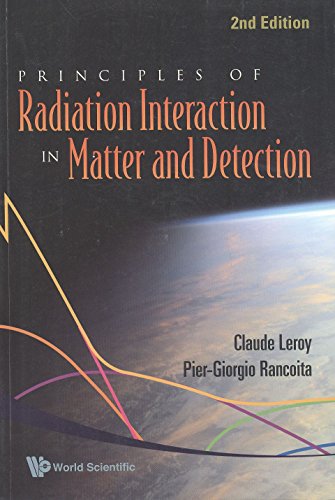Principles Of Radiation Interaction In Matter And Detection pdf download
Par gee catherine le mardi, juillet 26 2016, 11:43 - Lien permanent
Principles Of Radiation Interaction In Matter And Detection. Leroy C., Rancoita P. G.

Principles.Of.Radiation.Interaction.In.Matter.And.Detection.pdf
ISBN: 9812818278,9789812818270 | 951 pages | 24 Mb

Principles Of Radiation Interaction In Matter And Detection Leroy C., Rancoita P. G.
Publisher: WS
Some of its properties could be defined already, we obviously couldn't see it, so it didn't interact with electromagnetic radiation (light would simply pass straight through it) but its main property was that it had mass. It's responsible for a galactic glow, an abundance of anti-matter, and now — three quiet little taps in an underground mine. Understanding atomic structure and the physical mechanisms of radiation interactions is the foundation on which much of the current practice of radiological health protection is based. In recent years the Fermi Gamma-ray Space Telescope has detected a flux of gamma-rays from the centre of our galaxy and the Wilkinson Microwave Anisotropy Probe (WMAP) has revealed a "haze" that also seems to envelop the Milky Way's core. But there's a problem: the amounts of baryonic matter detected via Much of this tenuous, filamentary gas remains undetected, but astronomers expect that it could most likely be found between interacting galaxy clusters, where the filaments are compressed and heated up, making them easier to spot. The most popular idea of Dark Matter we have, is that is made of WIMPs, or Weakly Interacting Massive Particles. Atoms, Radiation, and Radiation Protection offers professionals and advanced students a comprehensive coverage of the major concepts that underlie the origins and transport of ionizing radiation in matter. 4 out of 5 dentists recommend this WordPress.com site. If these really do exist, there would be millions passing through us every second. Baryonic matter can, in principle, be detected through the electromagnetic radiation it releases. Although dark matter is thought to make up more than 80% of all matter in the universe, it does not interact with electromagnetic radiation and its existence has been inferred from its gravitational effects on visible matter.